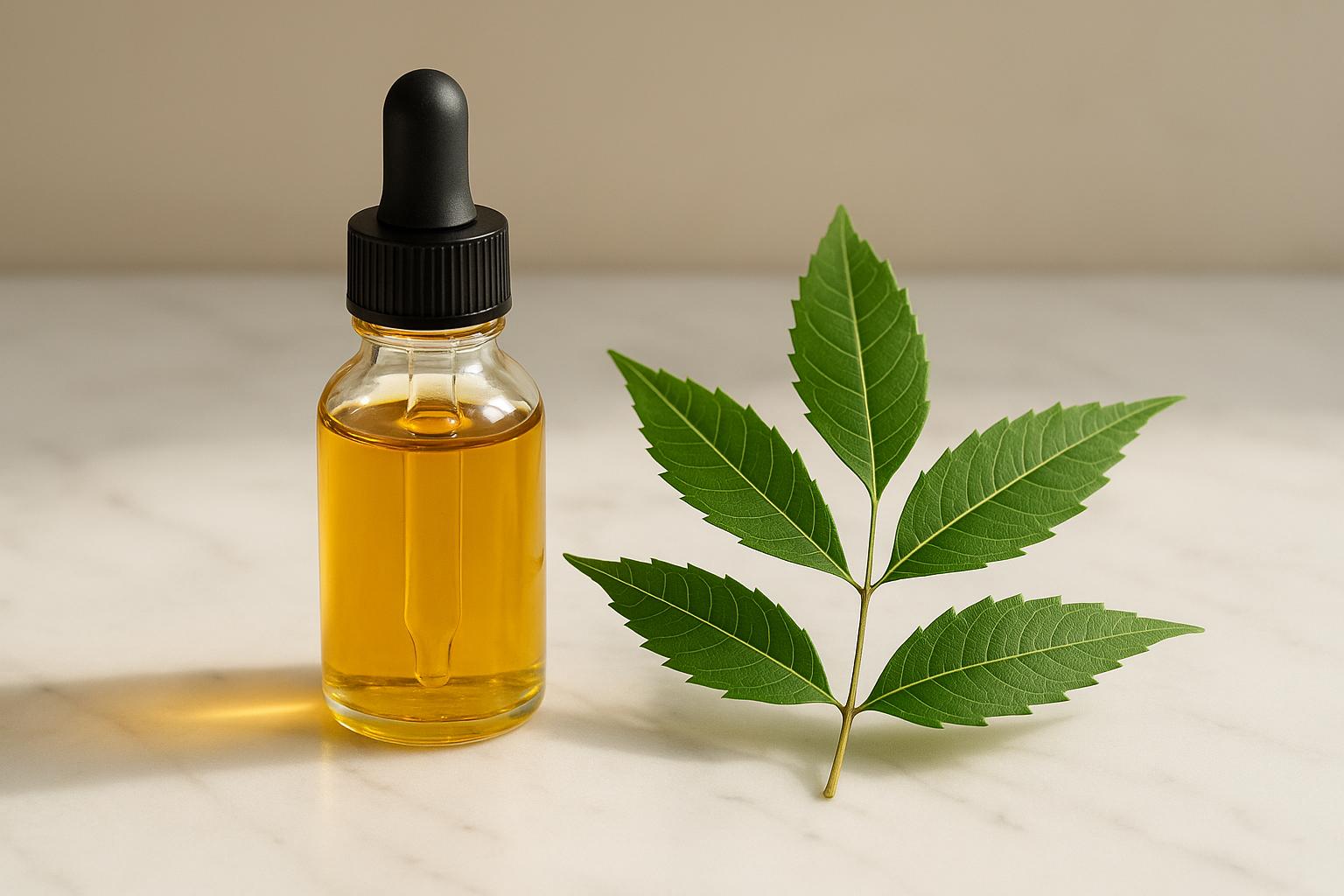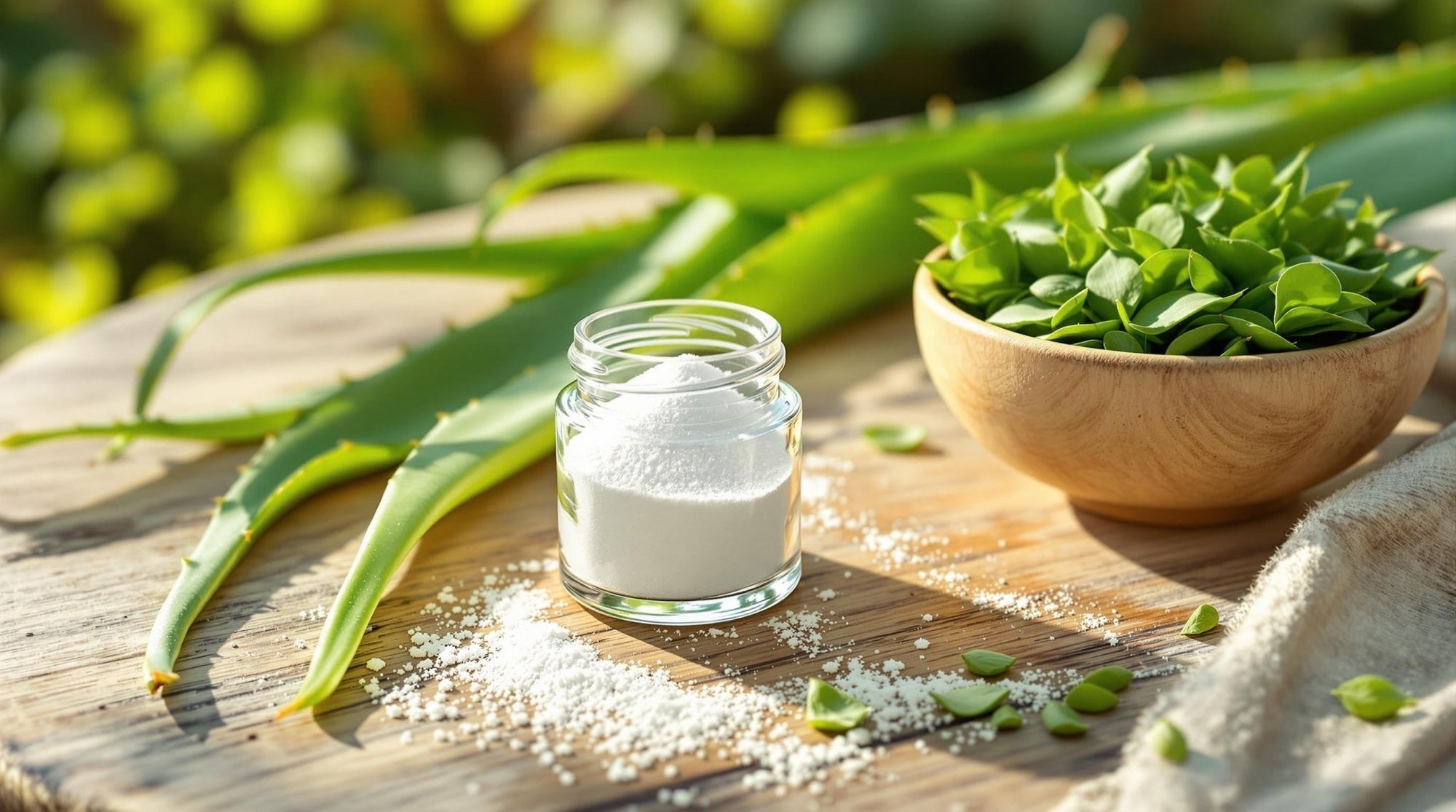Skin compatibility, anti-inflammatory and antioxidant properties of our neem leaf extract confirmed thanks to an in-vitro study by Dermatest

Test background
Together with Dermatest, we carried out an in-vitro study with the aim of testing the antioxidant and anti-inflammatory properties of the specially developed neem leaf extract, which is contained in our skincare products (such as the soothing care cream ) for psoriasis. In-vitro refers to research “in a glass”. To do this, cells are grown in a petri dish and allow relevant tests to be carried out to research the effect of a substance (like our neem leaf extract) on the cell.
Neem leaf extract is produced from the leaves of the neem tree using supercritical CO2 extraction. The process, which is currently being patented, concentrates the active ingredients from the leaves by a factor of 50.
This extract was then tested for its properties in the laboratory using reconstructed 3D human full-thickness skin models and primary human cells. This test is based on the latest science, in which the cells are artificially produced but deliver comparable results to “real” skin cells.
Testing for antioxidant properties
Study design
The reconstructed cells were grown in Petri dishes in the laboratory and to test the antioxidant properties of the neem leaf extract, the extract was added to the primary cells at different concentrations (0.5%, 1.0% and 2.5%) for 24 hours. These cells were previously induced with oxygen radicals, which triggered oxidative stress in the cell. The effect of the active ingredient on oxidatively stressed cells should therefore be measured. In order to put the antioxidant potential of our neem leaf extract in perspective, the antioxidant effect of vitamin C (2.5%) and astaxanthin (0.01%) was also tested using the same test procedure. Astaxanthin is one of the most powerful antioxidants around.
Test results
The results of the test (seen below in Figure 1) were very promising: If you look at the figure you can see that the neem leaf extract has a stress-reducing effect on the cell induced by oxidative stress. The oxidative stress of the cell is shown in blue and the reduction in cell stress, for example through neem, is shown in orange.
As you can see, the positive control (= the oxidatively stressed, untreated cells) has a stress factor of 100%. However, if these cells are treated with 0.5% neem leaf extract, the oxidative stress is reduced from 100% to 10.4%, a decrease of 89.6%. In general, the higher the concentration, the higher the antioxidant potential. With the most concentrated version of neem leaf extract (2.5%), a decrease in oxidative stress of 97% can be observed. The cells are only minimally (3%) oxidatively stressed.
When the cell is treated with vitamin C, oxidative stress decreases by 61%. In comparison, neem leaf extract had a higher antioxidant potential than vitamin C at the same concentration (2.5%). It can therefore be interpreted that the antioxidant properties of neem leaf extract are superior to those of vitamin C and are more effective.
If the cell is treated with astaxanthin, the oxidative stress of the cell decreases by 97.8%. This means that this substance is only slightly superior to our 2.5% neem leaf extract. The antioxidant effect of our neem leaf extract is similarly effective and can compete with one of the strongest antioxidants.

Figure 1 - Effect of ingredients on oxidative stress
Testing for anti-inflammatory properties
Study design
The anti-inflammatory ones Properties of the neem leaf extract are tested as follows: The cells grown in the laboratory in the Petri dish were first treated with 0.5% SLS for 20 minutes. SLS is a sodium lauryl sulfate which is a common additive in soaps, for example. After single or repeated intensive (occlusive) contact SLS can temporarily cause dry, flaky skin conditions and contact dermatitis. The damaged cells were then treated with neem leaf extract (1% and 2.5%). To test the anti-inflammatory properties, the concentration of interleukin-6 (IL-6), an inflammatory marker, was based which is released by white blood cells directly at the site of the inflammatory event. The course of inflammation was observed over several days.
Test results
As you can see from Figure 2, a decrease in the IL-6 concentration occurs after a few days. For the neem leaf extract with a concentration of 2.5% (seen in green) this occurs after just 3 days, for the 1.0% extract after day 4 (seen in red). These remarkable results indicate a clearly pronounced anti-inflammatory effect of neem leaf extract.
For comparison, the IL-6 concentration was measured in SLS-damaged, untreated cells (shown in blue). Here the concentration increases steadily and has been significantly higher since day 1 than that of the cells treated with neem leaf extract.

Figure 2 - Inflammatory progression with neem leaf extract
Conclusion
In summary, the in-vitro study found that our neem leaf extract is a very well-tolerated substance that was very well tolerated by the human 3D full-thickness skin models and primary human cells. The extract also has a significant anti-inflammatory effect and reduces oxidative stress.
The ingredients of the extract, such as nimbolide and flovonoids, have thus proving its anti-inflammatory and anti-oxidative properties, which will be good for your psoriatic, inflamed skin.
Integrated into our psoriasis care cream, the extract in combination with other natural active ingredients ensures targeted care for your skin.



